Heating briquettes as an alternative to traditional fuels
Heating with briquettes is an excellent option for summer cottages, country plots and other places where gas pipelines are not connected or the installation of a stationary heating system does not make sense. The use of this type of fuel is excellent as an additional heating option in systems with two boilers or one, universal heat generator. Consider what types of briquettes are and what features each of the options.
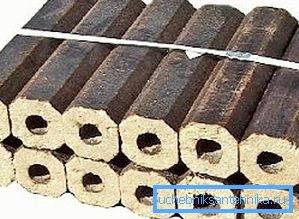
The main advantages of briquettes
The use of considered elements for heating has undeniable advantages, which we will consider:
| Independence | You do not need a gas pipeline, and if you have a house heating system with natural circulation, then you do not need electricity. The main thing is to have fuel available. This factor is especially important in areas that are prone to interruptions in electricity and gas supply and in summer cottages. |
| Low price | The cost of briquettes is very democratic, and if you compare their efficiency with the cheapest option - wood, the difference is not great, because a comparable amount gives almost twice as much heat |
| Convenience | In boilers with adjustable air supply, the burning time of one tab can be 7-10 hours, which ensures a comfortable sleep and stable heat throughout the day, while no one is at home |
| Environmental friendliness | The amount of emissions into the atmosphere is small, and a relatively small amount of ash is formed, which allows the furnace to be cleaned several times less often. |
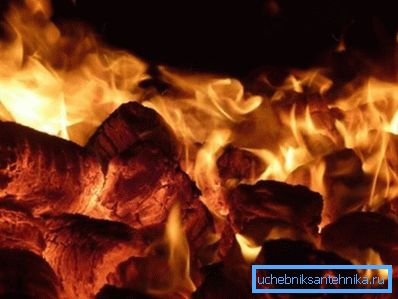
Types of extruded products for heating
Currently on the market there are three main types of compacts used as fuel for boilers, stoves and fireplaces. Consider each of them in more detail and in detail.
Wood products
A very common option due to the availability of raw materials, because you can use waste woodworking industries, sawdust, bark, dead wood, etc. Pressing is carried out under high pressure, as a result of which natural glue — lignin — is released from wood fibers, which securely fastens each element and ensures its strength.
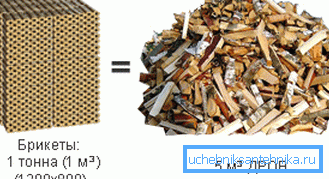
Of the advantages are the following factors:
- Product humidity does not exceed 10%, while in natural wood this figure varies from 20 to 60 percent.
- The density of the compacts is uniform, what provides the best efficiency of burning.
- During combustion, very little carbon dioxide is released..
- Coals formed during combustion can be used for roasting meat and cooking other dishes..
- Residual ash content averages less than 1%, which is the lowest among all solid fuel options..
- Heat transfer of this type of products is at least one and a half times higher than that of firewood, this produces a minimal amount of smoke.
- The minimum burning time of one bookmark is 4 hours.
- The same form of briquettes simplifies their transportation, storage and bookmark in the furnace.

Note! You can use a special type of fuel from wood - pellets, these are small granules that are laid in special household boilers for heating systems and can burn on one tab for up to two days.
Peat briquettes
This type is made in a similar way: peat is pressed under high pressure, pre-dried and heated.
There are several main advantages:
- Peat compacts can be used in any devices intended for burning firewood.
- Their shape provides the convenience of bookmarks, you do not have to chop and chop them.
- In boilers with adjustable air supply, the burning time of one tab can be up to 10 hours.
- The effectiveness of such products is two times higher than that of firewood.
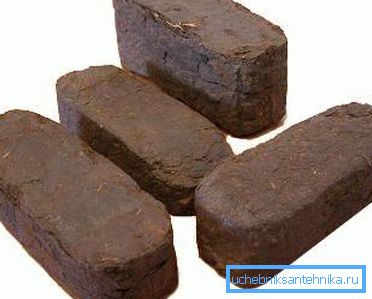
Coal products
This option is made of coal sifting, which is pre-crushed, processed with a special composition and compressed under pressure, the resulting elements have the following advantages:
- This type of fuel is smokeless and absolutely safe for health, as evidenced by the fact that it can cook food.
- When burning does not emit carbon monoxide, which ensures safety.
- Burning time is up to 10 hours, which allows you to bookmark the boiler 2-3 times a day.
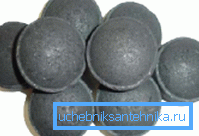
Note! Another option is charcoal briquettes, its properties are similar to the one described above, so we will not describe it separately.
Independent production
Heating briquettes can be made with your own hands, this process will require some effort, but you will make fuel from waste and save a lot of money.
Instructions for the work is as follows:
- First of all, you need a device for shredding wood waste.
- You should also stock up on boxes in which the molding will be done.
- Work begins with the grinding of wood, after which 1 part of clay is added to 10 parts of the mass, and everything is thoroughly mixed. Wood should not be too dry; moisture serves as a natural binding element.
- Forms are covered with sacking or polyethylene, after which the mass is applied and compacted.
- The finished elements are removed after a few days and stacked to dry under a canopy, the drying time depends on the humidity of the products and can be from a week to a month.
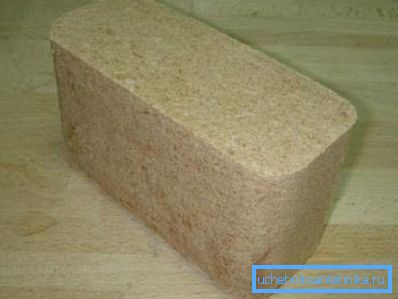
Conclusion
The use of this option as the main or additional fuel allows you to heat the house quite economically, while long-term combustion allows you to bookmark 2-3 times a day. The video in this review will allow to understand the topic even better.